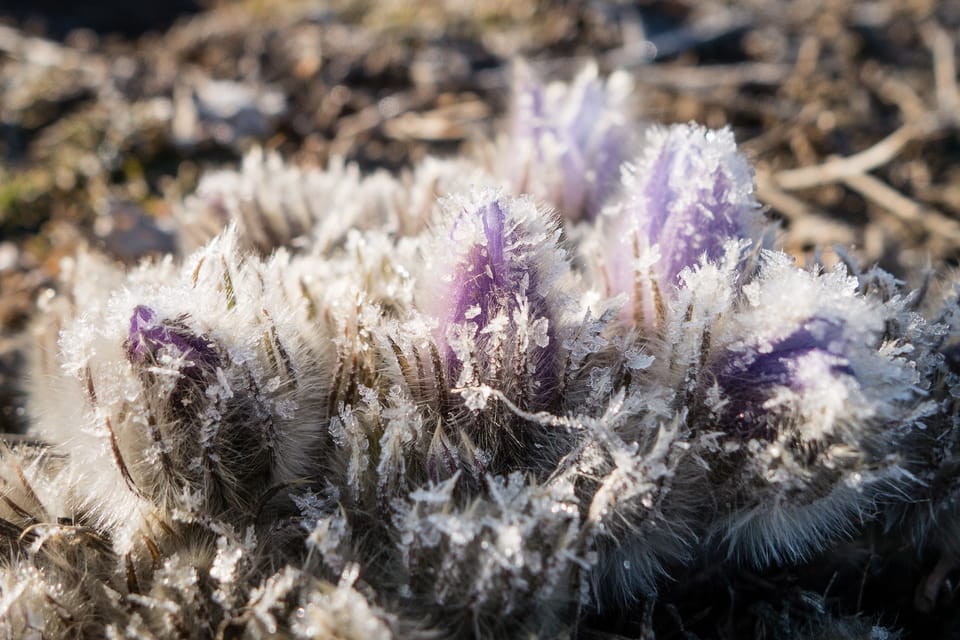Why do some plants have fuzzy leaves?

Have you ever wondered why some plants such as the prairie crocus or the pincushion cactus are fuzzy? Those hairs are alive and an integral part of the plant’s leaf.
Leaves are composed of several layers of plant cells. The outer layer is called the epidermis. It secretes a waxy coating that helps to protect the plant and retain water. Pores called stomata exchange gas between the plant and the environment. A pair of guard cells on either side of the stomata regulate how much water vapour, carbon dioxide, or oxygen is released or absorbed by controlling the size of the stomata.
The epidermal layer of many plants includes small hair-like appendages called trichomes. Unlike animal hair, however, trichomes are composed of living cells. The trichomes come in a variety of different shapes and sizes. They can be straight or curly, star-shaped or hooked. Approximately 30% of plants have glandular trichomes with small bulbs at the tip of the trichome that contain a variety of different chemicals.
Trichomes perform many different functions. The hairs provide insulation, protecting plants such as the prairie crocus from frost and shading pincushion cactus from the sun. The trichomes can also help plants to retain water by protecting them from wind and heat.
Trichomes frequently protect plants from insect attacks. The tomato’s glandular trichomes produce a chemical that deters insects. Hairy trichomes make it more difficult for insects to move around a plant and interfere with feeding. Animals won’t graze on plants that have rigid, irritating trichomes.
The glandular trichomes on mint and tomato leaves are also responsible for the plants' distinctive scents. The chemicals produced by glandular trichomes aren’t always so pleasant. The trichomes on stinging nettles inject chemicals into the skin when touched and make it sting.
Insect-eating plants such as sundew have very specialized trichomes that release a sticky substance that both attracts and traps insects. The insect is then caught in a web of sticky glands and digested by enzymes. Once the insect has been eaten, the leaf unfurls to reset its trap.
Further Information
Plant Leaves and Leaf Anatomy [Thought Co.]
Leaf Tissue Organization [Molecular Expressions]
Trichomes [Wikipedia]
Trichomes [University of Florida]
The Hairy Truth Behind Trichomes [2-min podcast, Moment of Science]
Sundew [Britannica]
Photo credit: https://www.flickr.com/photos/apmckinlay/25794040704
EcoFriendly West informs and encourages initiatives that support Western Canada’s natural environment through its online publication and the Nature Companion website/app. Like us on Facebook, follow us on Twitter or Mastodon, or subscribe by email.

Member discussion